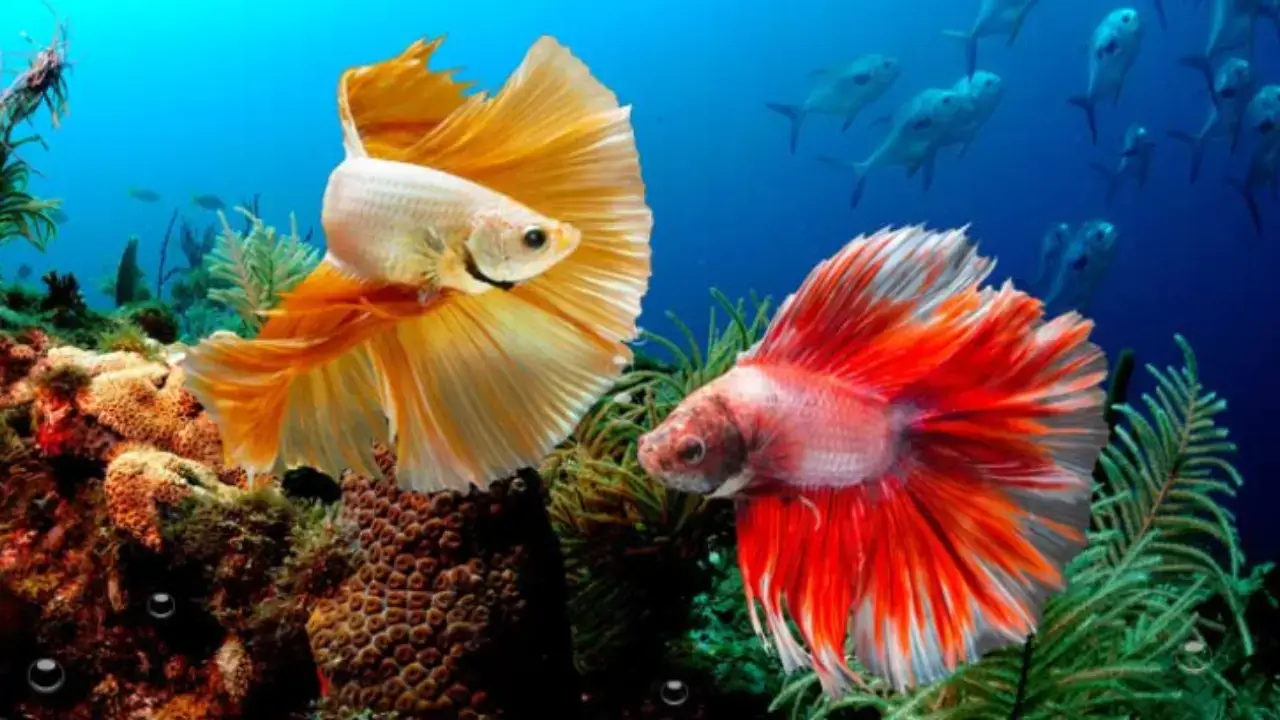
Bettas, or Siamese fighting fish, have evolved significantly as humans have chosen which ones to breed. They now seem very different, despite the fact that they are related. Their fins, patterns, and colors are all over the place, so someone who isn’t familiar with fish may think they’re unrelated.
You may even find the variety confusing if you’re an experienced betta fish keeper.
Here’s a guide that categorizes bettas by fin type, pattern, and color.
Table of Contents
Betta Fish Tail Types For Your Aquarium
People can find it a bit tricky to understand the different kinds of Betta fish. People group them in different ways, and it can get a bit confusing.
Some folks group them based only on the shape of their tails. Others look at both the tail shape and the color of the fish. And there are even people who use special names for the different shapes of tails, colors, and patterns.
It’s like looking at things in different ways. Betta fish come in many types. One big difference is how their tails and fins look. Some have long, fancy fins, and some have short fins that look like fans. There are many different kinds to see.
Let’s now examine the basic forms of tails present in commercially accessible betta fish species.
1. VeilTail (VT) Betta Fish

The VeilTail Betta is a common type of fish you might see in fish tanks. It has a long, flowing tail that trails behind its body. These fish come in many different colors and patterns because they’ve been bred a lot. Sometimes, they might have patterns that look like koi fish or marble.
These fish aren’t the best swimmers. They do well in tanks with a gentle flow of water because they move slowly and delicately.
Compared to other short-finned Betta fish, VeilTails are not as aggressive. They usually have a calm and peaceful nature. Most of the aquarists like to have them in their tanks because they’re pretty and easy to find. They add a nice and calm feeling to the tank at home.
2. Crowntail (CT) Betta Fish
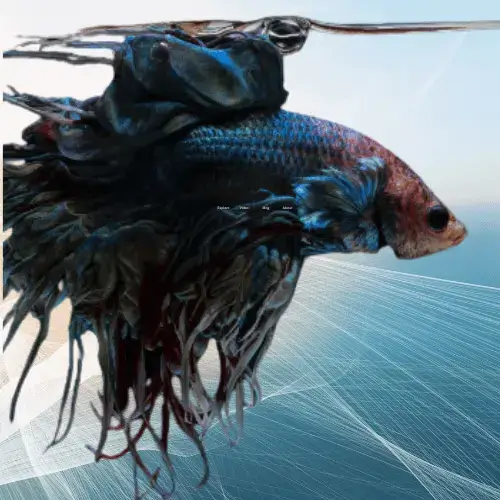
Crowntail Bettas, sometimes called CTs, were made in a place called West Jakarta, Slipi, Indonesia, in 1997. They got their name because of their fins.
These fish are called “Crowntail” because their fins have less skin between the parts that stick out, making fewer spikes.
You can easily recognize a Crowntail Betta because its fins appear pointy and awesome. The fins seem uneven and rough because there’s less skin, and the parts that stick out are larger. These sticking-out parts can come in pairs, groups of three, cross shapes, or four parts, which makes them look very nice.
Lots of people who like betta fish really enjoy Crowntail Bettas because they look super cool and catch your eye. They have really bright colors and their fins are all wavy, which makes them make aquariums look even better.
3. Halfmoon Betta
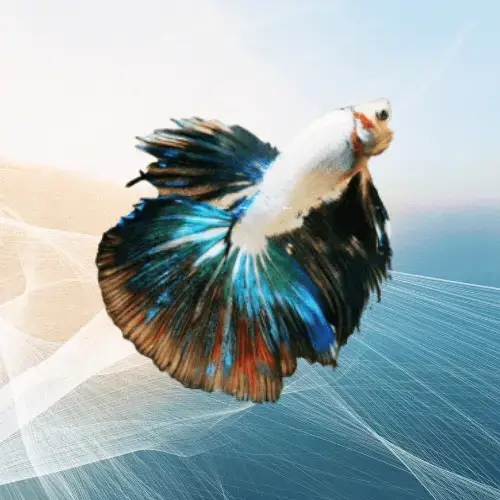
The Halfmoon Betta is a special fish that looks very interesting because of its special fin shape. The back fin, which is also called the tail fin, looks like a half-moon and is very big, like 180 degrees in both length and width.
Although Halfmoon Bettas are unquestionably beautiful, they are more prone than other kinds of bettas to find rot and tail tearing.
To maintain their health and well-being, it is imperative to give them the proper care and attention.
The Halfmoon Betta is one of the more aggressive betta species. Keep a close eye on their behavior when introducing them to a community tank.
You may need to separate them into a different tank if necessary to avoid any confrontations or injuries.
The Halfmoon Betta fish is liked by people who have aquariums because of its special tail shape and bright colors, even though it can be a bit tricky to take care of.
4. Combtail Betta
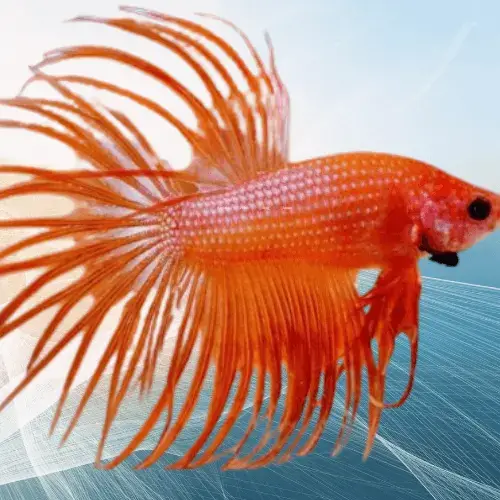
There are many different tail shapes for the Comb Tail Betta, rather than possessing a unique shape.
Betta fish called Comb Tail Betas have fins with longer parts that stick out from the main part of the fin. This makes them look a bit spiky. Another type of Betta, called Crown Tail, also has this look, like the teeth of a comb.
But it’s not as easy to see. These Comb Tail Betas usually don’t sag down like Veil Tails often do.
5. Rosetail/Feather Tail Betta

There is something gorgeous and delicate about the fin structure of the Feather Tail species of betta fish.
The VeilTail (VT) Betta Fish is very beautiful, and lots of people enjoy having it as a pet. It has long, wavy fins that resemble a gentle curtain. These fish come in many vibrant colors and each has its own unique character. To look after a VeilTail Betta, you need to keep its home clean, provide the correct food, and ensure it feels relaxed and joyful.
Imagine a VeilTail Betta as a mix between a Rosetail and a Crowntail. Rosetail Bettas have more lines in their fins, which makes them look really fancy. Feather Tails also look amazing.
When they swim, their fins move gracefully like they’re dancing, making them beautiful to watch. They have a delicate and feathery look that makes them even more charming.
Just like Rosetail Bettas, Feather Tails might have torn fins, broken lines, or they could bite their own tails. This might make them live for a shorter time. But if we take good care of them, keep their water clean, and make sure they’re not stressed, they will be healthier and happier.
To make sure Feather Tails live a long time, we need to be careful and help them when they’re not feeling well.
6. Double Tail betta

Double Tail Bettas have two distinct tails that separate at the base, unlike most bettas which have one tail. Tail finnage is distinctive to each animal, giving it a distinct appearance.
Fish have slim parts where their tails connect to their bodies. Instead of just one tail splitting into two, these parts make the tails separate. This makes Double Tail Bettas look very nice and charming.
These special Bettas have bigger top and bottom fins and more than one tail. This special thing makes their fins look even better, adding to how they already look.
What’s interesting is that Double Tail Bettas usually have shorter bodies than other kinds of bettas. Because of this and because they have many tails, they look balanced and just the right shape overall.
7. Spadetail Betta
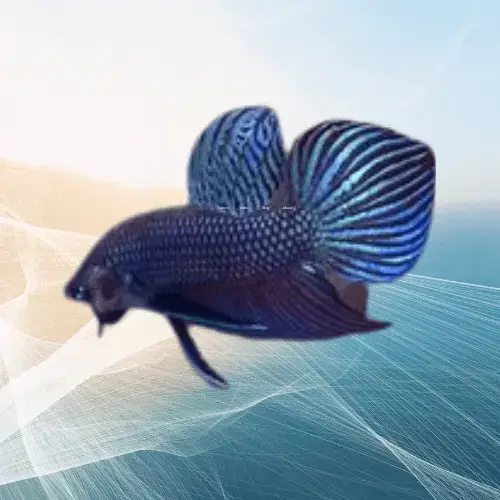
Betta fish with a spade-like bottom fin is known as Spadetail Betta. Spade Tail Bettas have a broad base that gradually narrows to a smooth and pointed end.
The Spadetail Betta and the Round Tail Betta both have tails that are broader at the base, which may make them appear similar at first glance. But the caudal fin’s form is what makes the main difference.
As a result of this special characteristic, the Spadetail Betta stands out and makes a statement. The spade-like curve of its tail enhances its overall aesthetic appeal and makes it a popular betta.
The Spadetail Betta has an elegant and striking appearance, regardless of whether it is exhibited in a vivid color or with detailed patterns. A compelling addition to betta fish collections, its unique caudal fin shape lends a sense of originality to any aquarium environment.
8. Dumbo/Elephant Ear Betta

The peculiar betta fish species known as Dumbo Bettas, also called Elephant Ear or EE Bettas, can be identified by their enormous pectoral fins. These fins have enormous ruffled margins and can become up to five times bigger than those of a typical betta.
Dumbo Bettas are no different from other betta species in that their pectoral fins are essential to swimming. These fish regularly flap their fins, imitating a dancer gracefully moving with a feathered fan because of their enormous and ruffled pectoral fins.
Due to their particular characteristics and relative difficulty in breeding compared to other betta kinds, Dumbo Bettas can be difficult to locate at conventional retail stores. However, aficionados who value their distinctive appearance frequently seek them out.
It’s critical to give Dumbo Bettas a habitat that can support their massive pectoral fins. Maintaining a gentle current in their tank is advantageous because it can help with their swimming, which may be a little more difficult due to the larger and heavier fins.
Dumbo Bettas are a special type of fish that look different from other bettas. They are a bit harder to make more of compared to other betta types, so they’re not always easy to find in regular fish stores. But people who really like how they look will try hard to find them.
It’s really important to give Dumbo Bettas a home that helps their big fins. Making the water in their tank move a little bit is good because it helps them swim better. Their big fins can make swimming a little tricky, so the moving water is like a helper.
When Dumbo Bettas swim, their big fins look amazing, like a dancer showing off a fancy fan.
9. Half Sun Betta
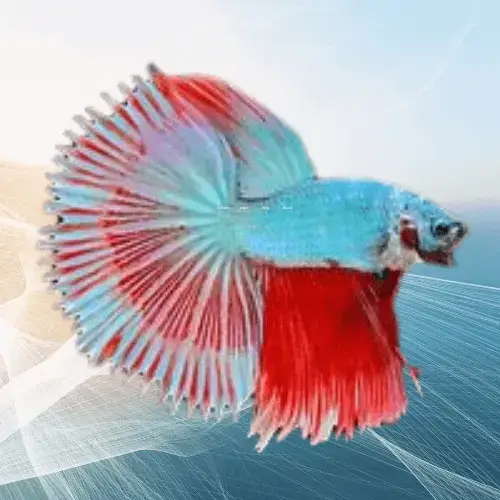
Half-sun tails happen when half-moon tails and crown tails are purposely bred together. Just like crown tails, half-moon tails have rays that stretch a bit past the fin’s webbing, making them look really cool with a wide 180-degree spread.
While the half-sun tail type is characterized by minimal ray extension, it shouldn’t be mistaken for a full crown tail due to its appearance.
10. Plakat (PK)

The plakat betta, also called PK, is a type with a short tail. It’s more like the wild betta splendens than other types. People might think they’re female fish (which have short tails), but males have longer lower fins, roundish back fins, and pointy backside fins.
The regular plakat fish usually has a short, round or slightly pointy tail. But because people have chosen specific fish to make babies, there are now two more kinds of plakat fish: the half-moon plakat and the crown tail plakat.
The half-moon kind has a short tail, but it spreads out in a half-circle, like the shape of the moon when it’s half visible. The crown tail kind has longer parts sticking out from its tail and less of the webby part in between those long parts, like a crown tail fish. But even though it’s like a crown tail, it still has a short tail like the regular plakat fish, not a long one.
11. Halfmoon Plakat
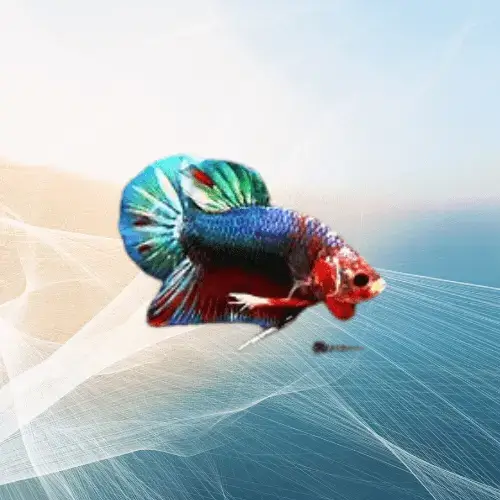
The halfmoon plakat Betta fish differs from the normal plakat Betta fish by having a slightly larger tail. The tail of a halfmoon plaket spreads out to 180 degrees, resembling the shape of a capital D.
Half-moon plakats have short tails, but they still act lively and fierce like regular plakat Betta fish. They keep the same spirited attitude that fans enjoy.
To stop them from leaping out of their tanks, make sure to give them a cover that fits tightly.
For safety reasons, this extra layer of care ensures the safety of these stunning fish.
12. Roundtail Betta

A roundtail betta is a single-tailed, long-finned betta fish with a rounded caudal fin. The upper and lower caudal branches are curled in a “C” shape, giving this species its unique appearance.
Male Roundtail Betta
Male round tail bettas have a rounded caudal fin with primary branching. It is one of the defining characteristics of their appearance.
Female Roundtail Betta
The female round tail betta can appear similar to females with other betta tail types, making identification difficult. A female roundtail’s curved caudal rays are often similar to those of short-finned bettas.
13. Delta (D) & Super Delta (SD)

Delta tail betta fish get their name because they look like the letter “D” in Greek when you look at them from the side. Their tail ends in a round shape. The main difference between a super delta betta fish and a regular delta fish is how much their tail spreads out. A super delta’s tail spreads out a lot, almost like a half-moon shape, which is about 180 degrees. But a plain delta fish has a smaller spread in its tail.
What sets delta and super delta tails apart from other similar tail types is their even distribution. If a horizontal line were drawn through the middle of the body of a delta or super delta betta fish, it would be symmetrical, with an equal amount of tails above and below the line.
Also, the lines in the tail should not look like they’re combing or forming a crown. The parts that connect the lines should reach all the way to the ends, avoiding a “spiky” look
When people talk about delta tails, they often just say “D,” and for super delta tails, they use “SD.”
Types of Betta Fish By Color
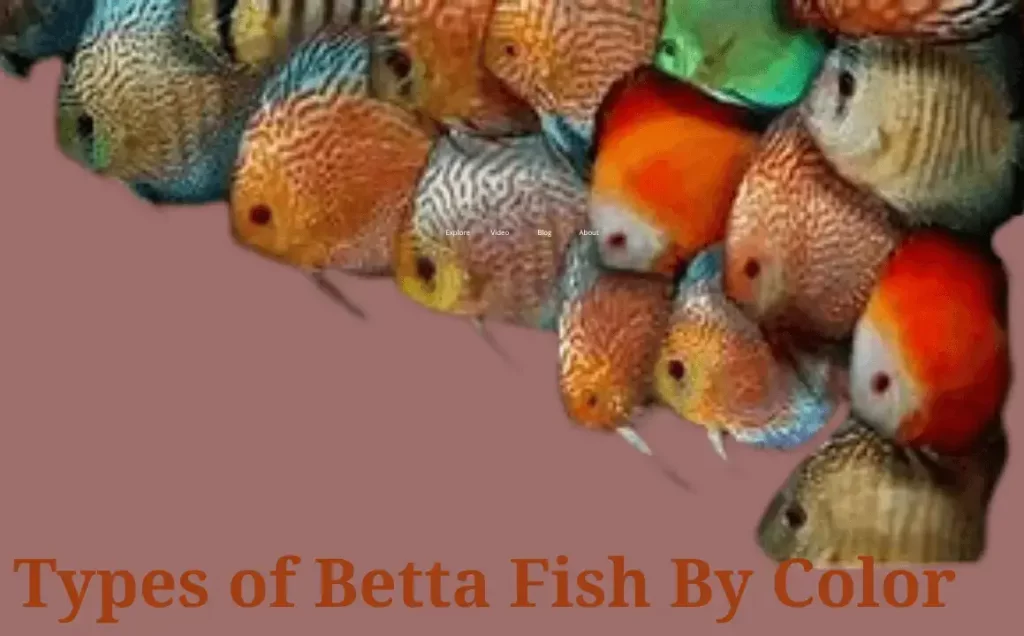
Siamese fighting fish, or betta fish, exhibit a wide range of colors depending on their breed. They display these colors not only on their tails but also on their bodies.
Betta fish have three main colors: red, black, and yellow. These colors come from special cells that make colors called chromatophores. When these colors mix together, betta fish can be many different colors. You can easily see charts online that show the different colors betta fish can be.
What is the Rarest Betta Color?
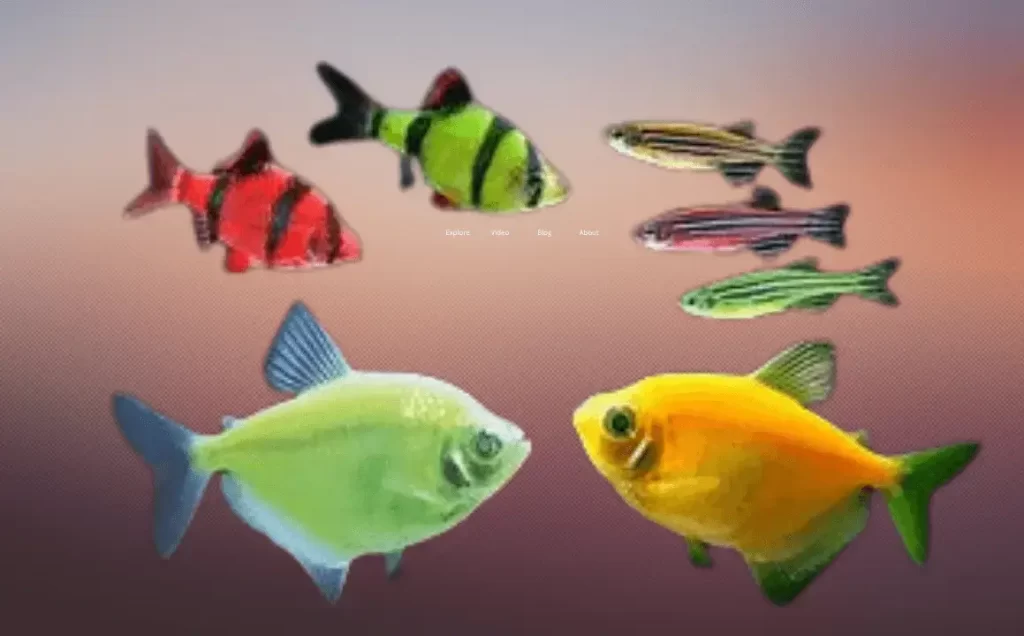
This variation causes numerous health issues and complications, which makes intentionally breeding albino bettas irresponsible. A type that has health issues should not be bred, as it can be considered unethical.
Other rare color variations include purple bettas and chocolate and orange bettas. Let’s take a closer look at all the colors available among betta fish.
14. Black Orchid Betta
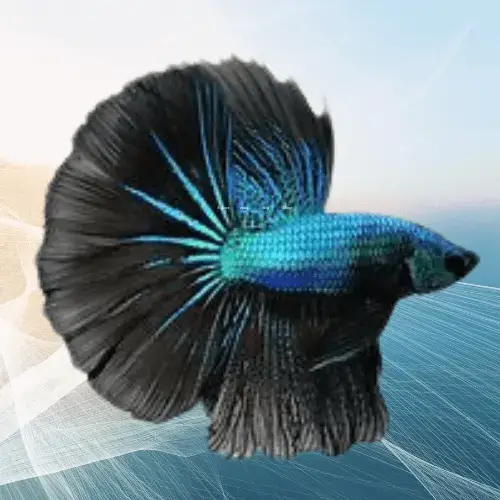
The Melano Betta is highly admired for its black coloration, which is the result of a genetic mutation that increases black pigmentation significantly. In order to reproduce, Melano females must be bred with Melano gene-carrying females of different varieties.
At the same time, the Black Lace Betta fish also has a deep color, but it’s not as strong as the Melano’s color. The female Melano fish can have babies, but the female Black Lace fish can’t, so it’s simpler to make more of them for people who like keeping fish.
15. Blue / Steel Blue / Royal Blue Betta

The color blue is very popular and widely available among betta fish. Blue wash, or true blue, is the standard and is easily available. It is not only the standard blue that is available but there are also other shades.
An example of a grayish blue is steel blue. A royal blue betta fish boasts an iridescent coloring if you desire a more vibrant option. The rarity of this bright-colored betta may make finding it a challenge.
16. Red Betta
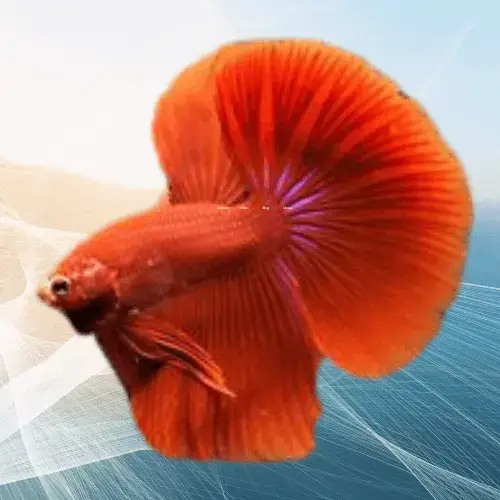
Among the various types of betta fish, red betta fish dominate. As they gracefully glide through an aquarium, their striking and uniform coloration creates a mesmerizing spectacle.
Red betta fish are known to display vibrant hues. However, if their color appears faded or lackluster, it may indicate water quality issues. Ensure optimal conditions for your red betta fish by assessing pH levels, temperature, and other relevant parameters.
17. Purple/Violet Betta

It is also one of the most expensive varieties of betta fish since purple varieties are among the rarest.
The presence of a purple betta fish is quite rare, but you often come across bettas with deep violet or bluish tones, with copper iridescence. Individuals with purple bodies and fins of a different color exist, as well as solid purple bettas with imaginative names.
18. Green Betta
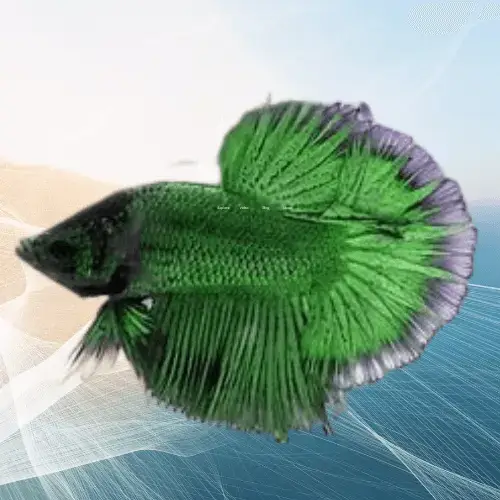
Most Betta Fish are turquoise in coloration, and green Betta Fish are rare. In most cases, however, the green hue is hidden under a darker shade. Depending on the lighting, however, you may see a green tone that appears iridescent. Betta Fish with bright or dark green colors are quite rare and are highly valued by enthusiasts.
19. Yellow Betta
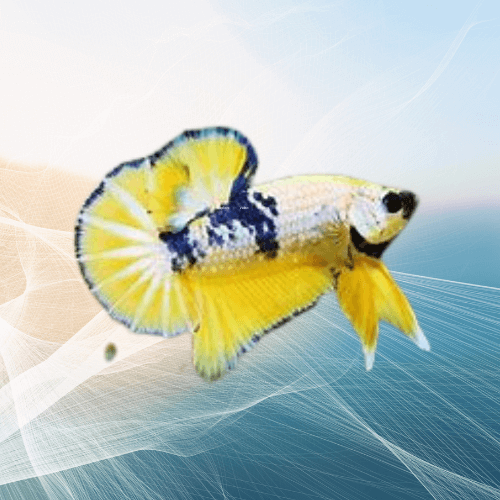
Different types of yellow-bodied betta fish exist, from vibrant sunshine to soft butter. Not only is its body richly colored, but its tails and fins are as well.
Betta Fish with yellow bodies, fins, and tails are a popular color variant. Variations in yellow coloration can occur, from a vibrant, intense shade to a milder, subdued one. Because this variation is similar to other Betta fish variants but has a distinct yellow color, it is often referred to as “non-red.”
20. White Betta

While white Betta fish breeds may seem plain and dull to some, they have an understated beauty that should not be overlooked. Their captivating tail types gracefully flow and swoop, enhancing the elegance and charm of any fish tank.
Pair white bettas with fish of contrasting colors, such as rich red, vibrant blue, or even striking black, to enhance their appeal. This will help you create a harmonious and visually appealing aquatic display.
21. Clear/Cellophane Betta

A clear betta has translucent skin without any visible pigmentation, as opposed to an albino betta. There is a slight pink hue to clear bettas, which should not be mistaken for coloration. The transparent skin makes internal organs visible, which accounts for the pink tone.
22. Wild-Type Betta

Wild-type betta fish have specific patterns, but they can also describe a specific coloration. Typically, wild-type betta fish have an iridescent green or blue body with hints of red and/or blue on their fins.
23. Chocolate Betta

Although the title “chocolate betta” is not officially recognized as a distinct type of fish, it is a widely used and accepted term among betta enthusiasts. A “chocolate” betta, or a variation of a bicolor betta, typically has a brown body and yellow or orange fins.
However, there are several ways to use the word “chocolate”, causing some confusion. The term “chocolate” may be used by some individuals to describe bettas that have almost black, dark green, or dark blue bodies, but technically, they should be called “mustard gas”.
24. Pink Betta Fish
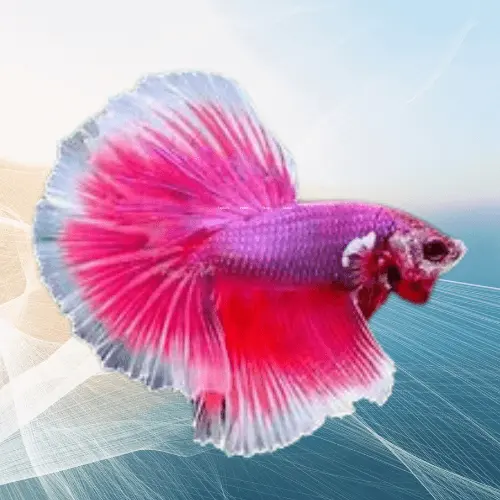
The pink betta fish is famous for having a distinctive look that can occasionally border on being invisible. Be aware that transparent-appearing Bettas can be mistaken for the albino variety since they have little pigmentation and show through the skin like they are made of flesh.
These fish display a vivid and deep pink hue on both their body and fins when the color pink is more prominent. In spite of the fact that pink is their prominent color, Pink Bettas can also display red, purple, and white hues along their fins, tails, and bodies. This results in a stunning and intriguing display of pink color variations.
The Pink Betta Fish is sought after by aquarium enthusiasts for its unique and eye-catching appearance, adding a touch of elegance and beauty to any aquatic setup.
Types of Betta Fish By Pattern
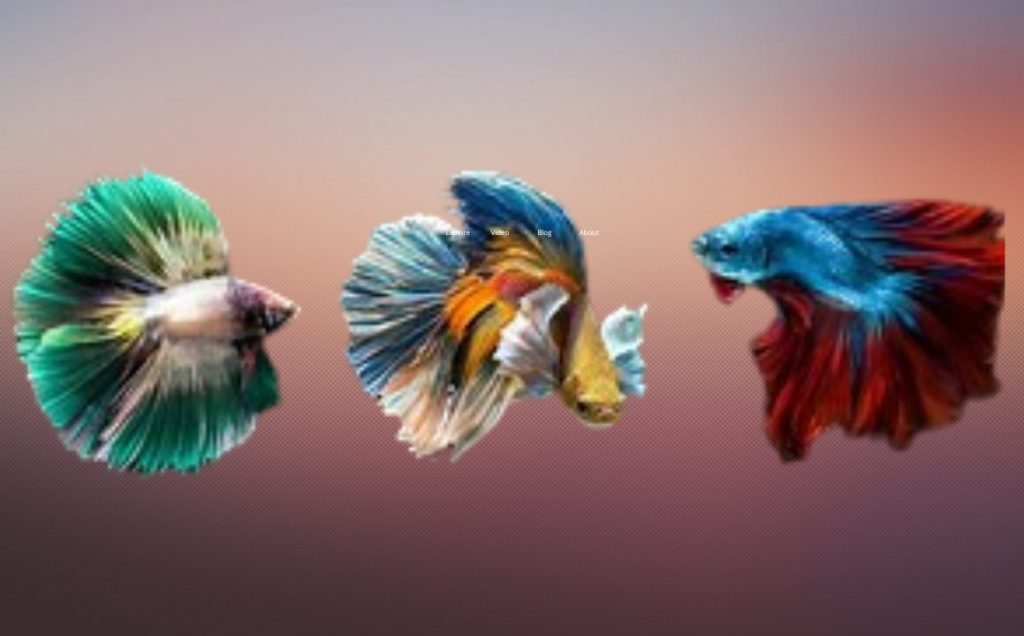
There are a variety of colors and patterns of scales on the body and fins of Betta fish that play a critical role in identifying them. Some types may appear simple, while others are remarkably beautiful. There are also certain patterns that are considered rare and highly coveted by enthusiasts.
Without further ado, let’s discuss commonly recognized patterns.
25. Butterfly Betta

Butterfly bettas display an enchanting pattern that resembles the delicate wings of butterflies. One of the most attractive features of the betta fish is the way it glides gracefully through the water.
With its unique coloration that transitions gradually from her body to her fins, this betta variety boasts white edges and a distinctive hue on its outer fins. Bettas with butterfly patterns with a distinctive split shade at the halfway point are considered premium specimens.
26. Cambodian Betta
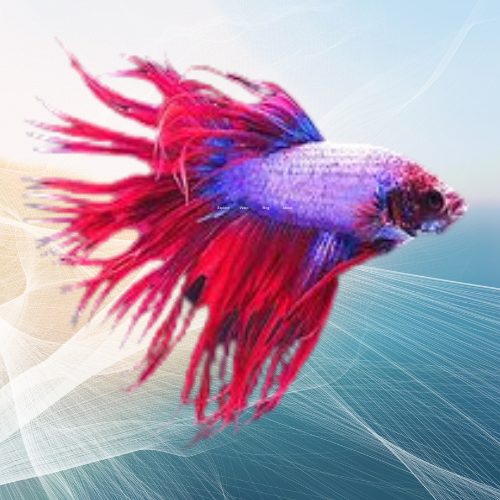
The Cambodian betta’s pale-pink body and vibrant red fins are the result of careful breeding. Sometimes the body may look more like flesh than pink. Even though Cambodian bettas come in other colors, the body must have flesh or pink hue to be officially recognized.
Cambodian betta popularity has waned in recent years as breeders prefer more contemporary and colorful varieties. Yet there are still dedicated hobbyists who are reviving interest in Cambodian bettas, especially those who admire their captivating bicolor patterns.
27. Marble Betta
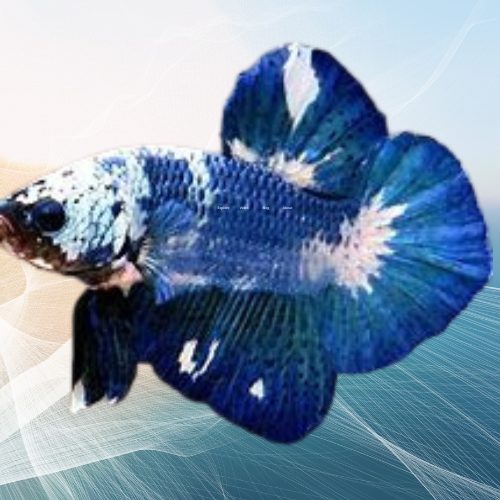
The marble betta fish originated from the breeding efforts of Orville Gulley, who raised bettas in peanut butter jars in prison. A black betta was initially developed by Gulley when he was trying to develop an unintentional breed.
A marble betta usually has a light-colored body with a dominant base hue accompanied by vibrant blues and reds. They have a unique blotchy pattern that tends to intensify and change over time, changing their appearance.
28. Dragon Scale Betta
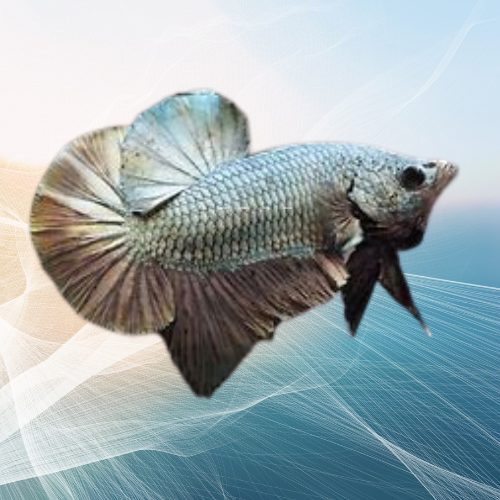
It is easy to identify dragon scale bettas by their vibrant metallic colors. Although the base color of the body may not be as striking as other patterns, the distinctiveness of the scales makes them stand out.
Bettas with thick scales have an almost medieval appearance, resembling armor. Because the scales themselves are white, the underlying body color is clearly visible. The scales of this breed are also outlined with dark edges, adding to its overall appeal.
29. Dalmatian Betta
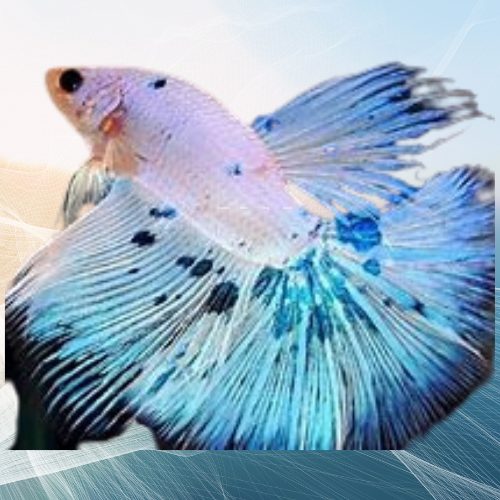
Discover the allure of the Dalmatian Betta, a rare and coveted pattern among bettas. This unique variety is distinguished by its color splotches, which usually blend shades of red with orange or blue with white.
Unlike marble, the Dalmatian Betta exhibits pronounced patterns. Of all Dalmatian variations, the orange Dalmatian is unusually hard to come by. A stunning specimen with a delicate pale orange body adorned with dark orange spots accenting its fins exudes an aura of rare and captivating beauty.
30. Bicolor Betta

The bicolor Betta fish have a distinctive appearance as implied by their name. They have a solid color on their bodies and a secondary color on their fins. In bicolor bettas, two colors are present at the same time. Whenever a betta possesses more than two colors, it is classified as a multicolored betta.
31. Multicolored Betta

Multicolored patterns refer to Betta fish with three or more colors on their bodies without fitting into any specific pattern category. A wide variety of variations are included in this classification, too numerous to mention individually. The general concept is clear, however, from the description that has been provided.
32. Mask Betta
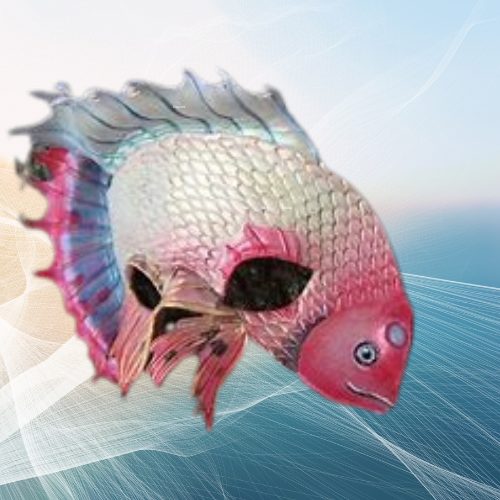
In betta fish, the mask pattern is an intriguing characteristic worth exploring. Betta fish typically have darker faces than the rest of their bodies. For the mask varieties, however, their faces are the same color and shade as their bodies, resulting in a uniform appearance from head to tail.
There are many different colors of this distinctive trait, but turquoise, blue, and copper varieties are the most common.
Rarest Types of Betta Fish

There are many varieties of Betta fish, but the fantail Betta fish is one of the most elusive. The caudal fins are fused at the top and positioned side by side, similar to the graceful fantail goldfish. This fascinating Betta type is extremely hard to find, and finding reliable sources to buy them proves incredibly difficult. Fantail Bettas are like mythical unicorns, with little information available about them.
Conclusion
This article may have revealed a remarkable degree of variability among betta fish, surpassing what most people would expect. Over the years, these fish have been selectively bred to produce innovative and captivating varieties.
For those who are passionate about keeping betta fish, it is essential to stay up-to-date on emerging patterns and fin types, as this field is constantly evolving and expanding.
I wish you a successful and enjoyable fishkeeping experience.

